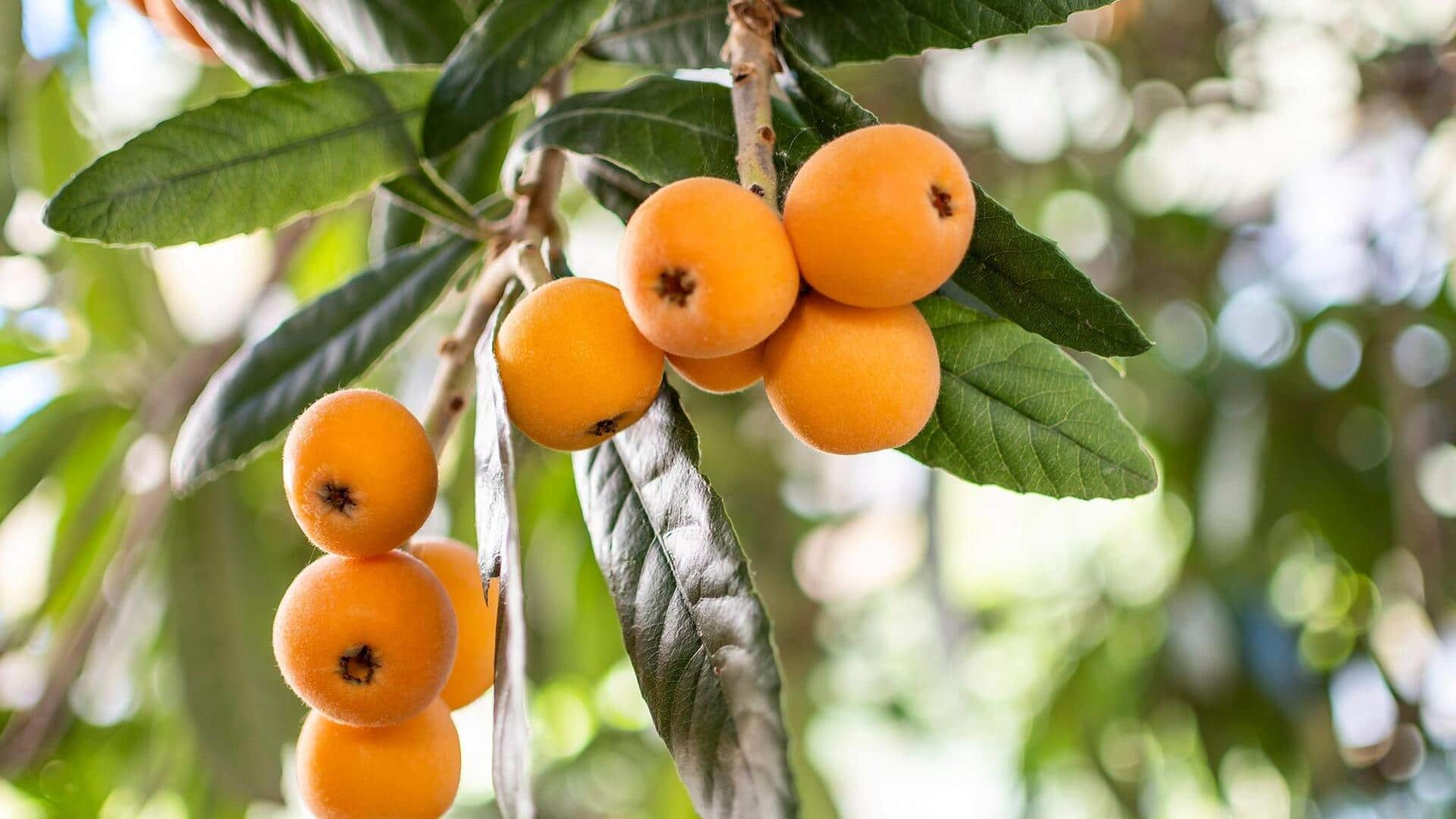
How to grow loquat trees at home
What's the story
If you're interested in growing your own fruit, growing loquat trees at home can be a great idea. These evergreen trees produce sweet, tangy fruits and also make for beautiful foliage. Given the right conditions and care, loquat trees can flourish at home. Here are some practical tips to plant, care, and maintain loquat trees for healthy growth and fruits.
Site selection
Choosing the right location
Choosing the right location is important for loquat trees to thrive. They need full sunlight to yield copious fruits. Make sure that the selected place has a well-drained soil to avoid waterlogging, which can damage the roots. Loquats like slightly acidic to neutral soil with a pH of six to seven. Stay away from frost-prone areas as young loquat trees are cold-sensitive.
Planting tips
Planting techniques
When planting loquat trees, dig a hole twice as wide as the root ball but no deeper than it. This way, roots can spread easily without being buried too deep. Space multiple trees at least 15 feet apart to accommodate their mature size and ensure proper air circulation. Water thoroughly after planting to settle the soil around the roots.
Care essentials
Watering and fertilization
Loquats require regular watering during dry spells, but avoid overwatering as it may cause root rot. A consistent watering schedule keeps them healthy, especially during flowering and fruiting stages. Fertilize with a balanced fertilizer every three months during the growing seasons—spring through summer—to get essential nutrients.
Maintenance tips
Pruning practices
Pruning is essential for shaping young loquat trees and getting rid of dead or diseased branches. Prune them in late winter or early spring before the new growth starts. Concentrate on thinning out crowded branches inside the canopy, while maintaining an open structure which allows sunlight to penetrate through all parts of the tree.
Protection measures
Pest management strategies
Loquats are prone to pests, including aphids, scale insects, and fruit flies, which may impact foliage health and yield quality if not controlled. Hence, regular monitoring is important, along with integrated pest management strategies. This involves introducing beneficial insects such as ladybugs or organic insecticidal soap sprays when required, without damaging beneficial organisms in your garden ecosystem.